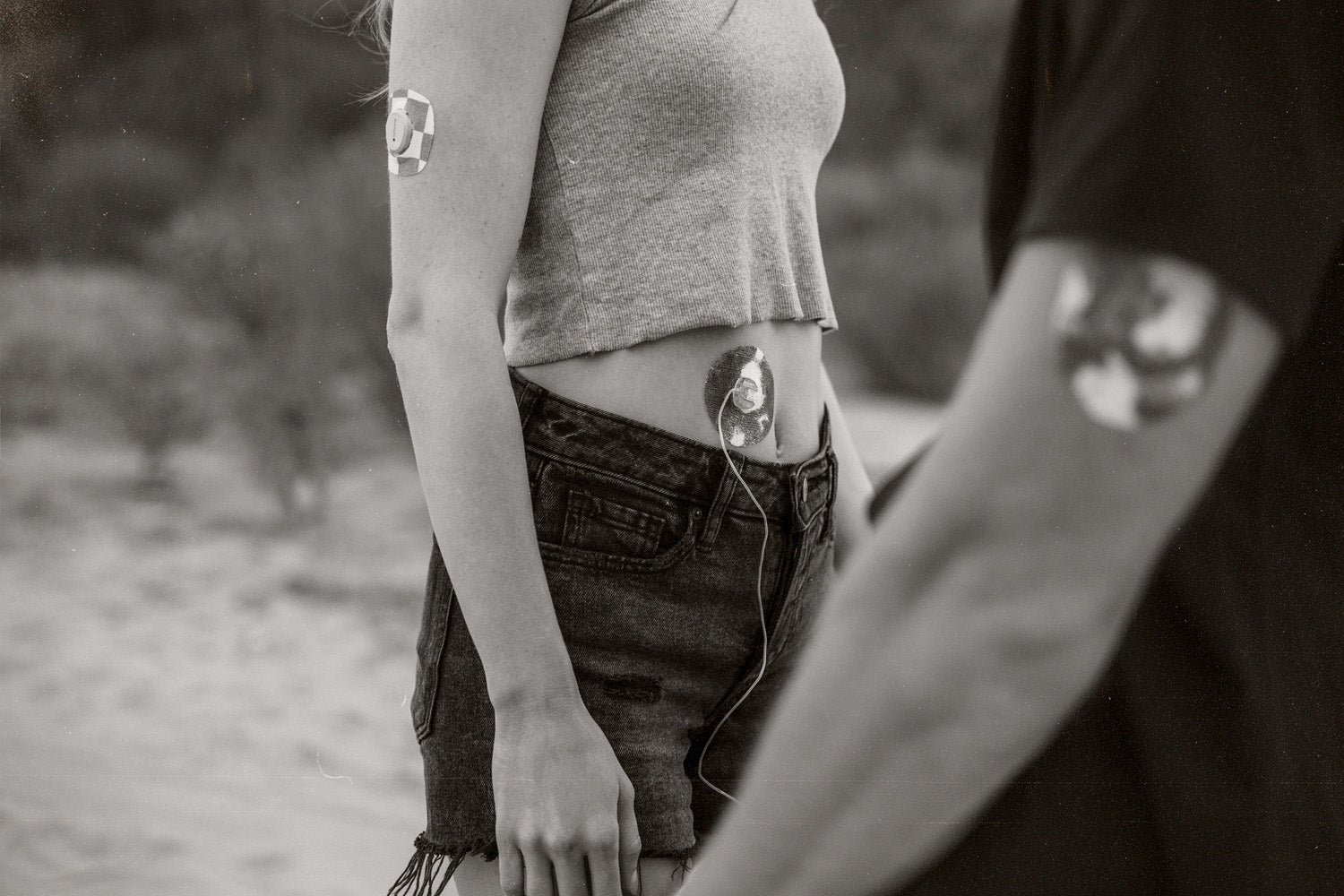*Disclaimer: All content and information in this blog is for informational and educational purposes only. If you have any specific issues or concerns with your diabetes device, such as device malfunctions, sensor errors, or performance complaints, please contact the manufacturer directly. Last updated on 09/20/2024.

Finding the right infusion set is an important part of successful insulin pump therapy. From tubing length to insertion angles, the choice is yours! While having choices with diabetes technology is a welcomed advancement, we know it can also be confusing, so we've broken down all your options for the most educated and empowered choice.
What is an infusion set?
Picture this: a tiny plastic cannula or steel needle that sits just under your skin, held in place by an adhesive patch (no, it’s not as scary as it sounds)! This is how insulin is delivered directly into your body without the need of multiple daily injections. Every 2-3 days, you’ll swap out your infusion set for a new one.

What are the types of infusion sets?
You have the choice of three different infusion sets:
- Angled Cannula: This infusion set features a soft cannula that is inserted under your skin at a 30-45 degree angle, offering a potentially more comfortable insertion experience for some users.
- Straight Cannula: This traditional option utilizes a soft cannula inserted at a 90-degree angle for a reliable and familiar choice.
- Steel Needle: These infusion sets use a fine steel needle for insertion. It may be suitable for people with scar tissue for better insulin absorption.

Infusion Set Options by Manufacturer
Every insulin pump brand offers a variety of infusion sets to choose from. Here’s a breakdown of their options:
Medtronic Infusion Sets
- Quick Set
- Mio Advanced
- Extended Infusion Set
- Sure-T
- Silhouette
Tandem Infusion Sets
- AutoSoft 90
-
AutoSoft XC
AutoSoft 30 - VariSoft
- TruSteel
iLet Beta Bionics Infusion Sets
- Inset
- Contact Detach

How to choose your infusion set
The ideal infusion set for you is a personal decision based on several factors:
- Personal Comfort: Some people find angled soft cannulas to be more comfortable while others swear by the reliability of a steel needle. Experiment with different cannulas to determine comfort preference.
- Skin Sensitivity If you tend to get skin irritation from adhesives, take a close look at the ingredients in the adhesive used by each infusion set to avoid any unwanted reactions.
- Scar Tissue: If you’ve been pumping for a while, scar tissue might be a factor to consider. For areas with scar tissue, a steel needle infusion set could improve absorption.
- Pump Compatibility: Each insulin pump brand has specific infusion sets that work with their device. Double-check that the one you’re considering is compatible with your pump.
- Insertion Method: Some infusion sets have automatic insertion devices, while others require manual insertion. Choose a method that best suits your dexterity and comfort level.
- Durability and Wear Time: If frequent set changes are inconvenient, consider extended wear sets that offer longer wear times between replacements.
Insulin Pump Infusion Sets Best Practices
Proper care and maintenance of your insulin pump infusion set can make a significant difference in both comfort and effectiveness.
Site rotations
The best practices for rotating your infusion site are:
- Replacing and Rotate Every 2-3 Days: It’s recommended to replace your infusion set and move it to a new site every 2-3 days. Consistently using the same site increases the risk of scar tissue, which can reduce insulin absorption overtime.
- Using a Site Rotation Pattern: Create a schedule or rotation pattern (such as a grid or a clock-face model) to insert into a fresh area of skin each time. Keeping the old infusion set on your body during the site change can serve as a good reference point for placing a new infusion set.
- Avoiding Scar Tissue: If you notice areas with lumps or hardened skin, avoid using those spots as it can affect how well your body absorbs insulin.
Skin Preparation
Proper skin preparation before inserting a new infusion set is important to minimize the risk of infection and to make sure the infusion set adheres to your skin:
- Clean Thoroughly: Before inserting your infusion set, clean the area with an alcohol wipe or soap and water to minimize the risk of infection. Let it completely dry to prevent irritation or skin breakdown from the moisture.
- Use Skin Barriers, If Needed: If your skin is sensitive to adhesives or you experience irritation, consider using an underpatch before applying your infusion set. This provides an additional protective layer between your skin and the adhesive.
Skin adhesive
Some infusion set adhesives may not stay secure as long as you need them to and additional adhesive support may be necessary:
Summary
The best infusion set for you will depend on what insulin pump you use, your personal preferences, skin sensitivity and lifestyle. It’s often helpful to try different options to find the one that works best for you.
































